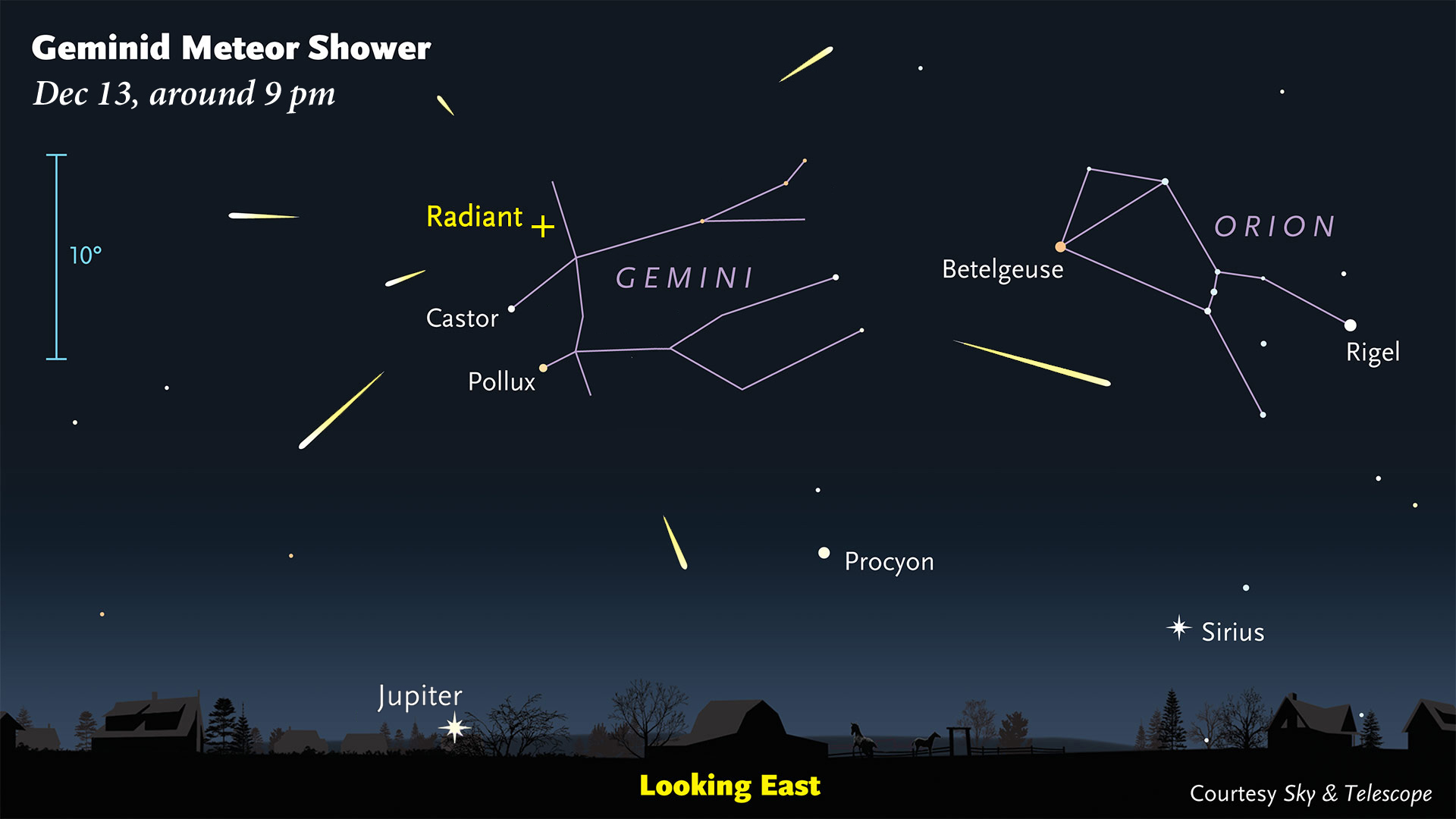Sky & Telescope | 2014 Dec 09
If it’s clear late on Saturday and Sunday nights (the nights of December 13th and 14th), keep a lookout high overhead for the “shooting stars” of the Geminid meteor shower. “The Geminids are usually one of the two best meteor showers of the year,” says Alan MacRobert, senior editor at Sky & Telescope magazine. “They are sometimes more impressive than the better-known Perseids of August.”
- [i]The Geminid meteors can flash into view anywhere in the late-night sky. But if you follow their paths back far enough, they all appear to diverge from a point in the constellation Gemini. The meteors' perspective point of origin is called the shower's radiant. Don't expect to see several meteors at once! This diagram is meant only to show their divergence from the radiant point. [b]Credit: Sky & Telescope / Gregg Dindermann[/b][/i]
Under a clear, dark sky, you might see a shooting star every minute from 10 p.m. local time until dawn on the peak nights. If you live under the artificial skyglow of light pollution the numbers will be reduced, but the brightest meteors will still shine through. There will be some interference as well from a last-quarter Moon, which rises close to midnight.
Lower counts of Geminid meteors should be visible earlier on those evenings, and for a few nights before and after December 13th and 14th.
To watch for meteors, you need no equipment other than your eyes. Find a dark spot with an open view of the sky and no glaring lights nearby. Bundle up as warmly as you can in many layers. “Go out late in the evening, lie back in a reclining lawn chair, and gaze up into the stars,” says MacRobert. “Relax, be patient, and let your eyes adapt to the darkness."
Geminids can appear anywhere in the sky, so the best direction to watch is wherever your sky is darkest, probably straight up. Small particles create tiny, quick streaks. Occasional brighter ones might sail across the heavens for several seconds and may leave a brief train of glowing smoke. ...
